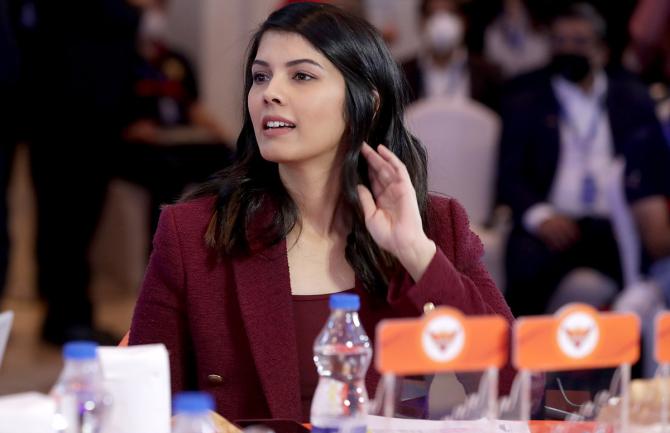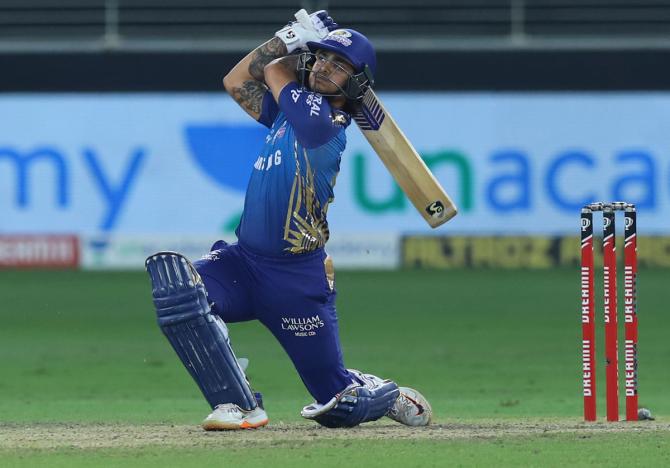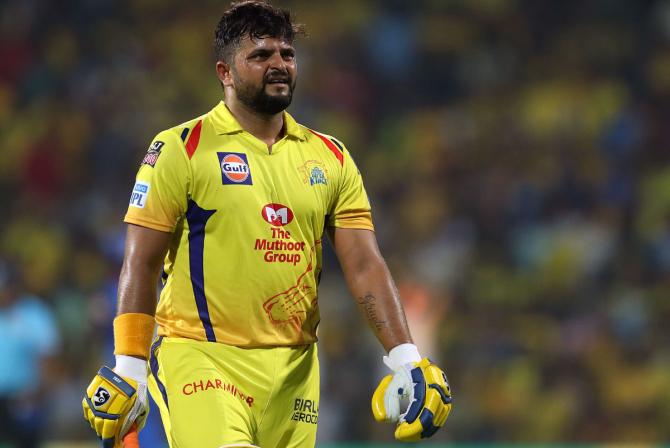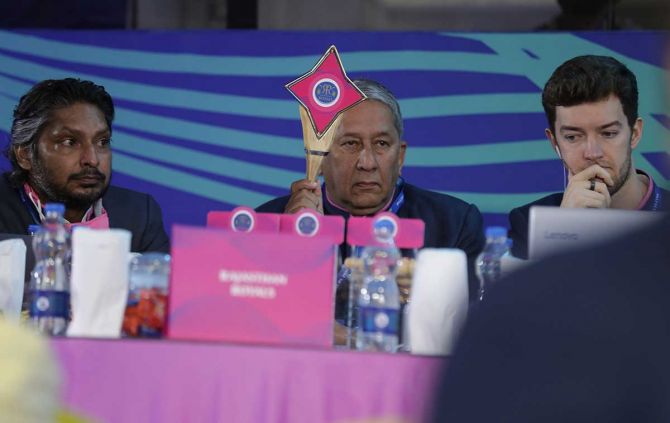 | « Back to article | Print this article |
'Did the Moneyball philosophy get redefined in the domain of the cash-rich IPL, which has become an integral part of the cricketing ecosystem?', asks Atanu Biswas.

Some big stars remained unsold and some were sold cheap at the recent Indian Premier League auction.
In contrast, some not-so-renowned -- even uncapped -- players were snapped up for astronomical prices. This is not new in IPL auctions though. It may very well be viewed as an index of players' usefulness in T20 cricket, to some extent.
While the IPL auction is discussed, the reference of the Brad Pitt starrer 2011 movie, Moneyball, based on Michael Lewis's 2003 bestseller, is invariably drawn.
While portraying the success story of Oakland Athletics and its manager Billy Beane in Major League Baseball in building a successful team despite lean budget using data analytics, this book dedicates a chapter to Bill James, a pioneer of sabermetrics -- which describes 'objective knowledge' that scientifically analyses and studies baseball, often through the use of statistical data, in an attempt to determine why teams win and lose.
And this has since infiltrated other sports and lifestyles.
During the 2005 NBA draft, the Portland Trail Blazers engaged a company called Protrade Sports, which estimated the probability of a player making a key contribution to the team using historical college data.

In the Premier League, Arsenal recruited Mathieu Flamini in 2004, Liverpool signed Jordan Henderson in 2011, and Leicester signed undervalued players like N'Golo Kante, Jamie Vardy, and Riyad Mahrez, and surprisingly won the Premier League in 2016, all almost in the Moneyball
The Wall Street Journal called the Yorkshire club Barnsley FC a 'Moneyball experiment'.
With advice from Mr Beane, with the youngest squad in the league, and one of the smallest budgets, in 2020-2021, Barnsley made it to the EPL Championship play-offs for the first time in 24 years.
Moneyball exhibited reliance on analytics over traditional scouting and a ruthless commitment to young players.

In cricket too, Andy Flower, the former England cricket coach, earned tremendous success by executing a noticeable application of the Moneyball philosophy. But, is the Moneyball tactics at all suitable for the cash-rich IPL?
In the 2002 baseball season, Oakland Athletics tied with New York Yankees for the best record, each winning 103 games, although their payrolls were $40 million and $120 million, respectively. There lies the true essence of Moneyball.
As economists Kevin Grier and Tyler Cowen explained: 'The Moneyball thesis is simple: Using statistical analysis, small-market teams can compete by buying assets that are undervalued by other teams and selling ones that are overvalued by other teams.'

Jaipur-based Rajasthan Royals were the cheapest of the original eight franchises when IPL was created, and they stormed to the first title with Shane Warne as the captain and crucial performances of some little-known and low-salaried players like Swapnil Asnodkar and Siddharth Trivedi.
While the Rajasthan Royals still manage to retain the tag of the IPL's 'Moneyball' franchise, the situation is different.
As the IPL grew, astronomical sums continued to be spent on some players.

In the 2022 edition, each of the 10 IPL teams has spent nearly? Rs 90 crore (Rs 900 million) to acquire players! This is just the reverse of the Moneyball strategy.
However, player evaluation is certainly the holy grail of analytics in professional team sports. And like baseball, cricket is a sport of a discrete nature where there are short bursts of activity and players have well-defined and measurable tasks that don't depend greatly on interactions with other players, there's more hope for accurate and comprehensive player evaluation.
The best-known Moneyball theory for baseball was that on-base percentage was an undervalued asset and sluggers were overvalued.
Similarly, in cricket, the conventional runs-per-dollar-spent or wins-per-dollar-spent are now replaced by much more sophisticated metrics such as balls-per-six, balls-per-dot, even 'pressure index', or maybe much more complicated and complex metrics.

Still, IPL has had many failed recruitments over the years. Certainly, there's a lot of room left for finer analyses -- slicing and dicing -- of tons of data that are available now.
A Moneyball strategy may lack essence with no possibilities of advancement to the higher division or relegation.
And the focus of the IPL teams is not only winning; enrolling star players help them to develop and rear a 'brand', which is commercially helpful.
In addition to the potential for on-field performance, the price of a player is often driven by factors such as marketability and popularity among local fans.
And how to quantify M S Dhoni's leadership, for example?
How much do business considerations influence auction decisions?
All of these are needed to be considered in data analytics.
A brand-nourishing alternative system has thus emerged.

In their 2011 book, The Beauty of Short Hops, Sheldon and Alan Hirsch argued that sabermetrics has nothing to do with baseball's spectacular improvisational quality, which is unquantifiable. This is true for cricket too. And possibly more so for IPL.
Did the Moneyball philosophy get redefined in the domain of cash-rich IPL, which has become an integral part of the cricketing ecosystem?
Atanu Biswas is professor of Statistics, Indian Statistical Institute, Kolkata.
Feature Presentation: Ashish Narsale/Rediff.com